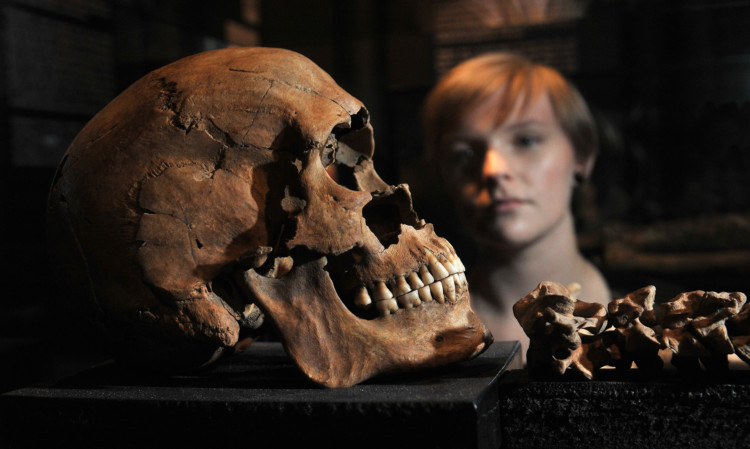A controversial Fife exhibition featuring the human remains of two medieval men has opened to the public.
Organisers of Voices from the Past: Life and Death in Medieval Dunfermline say it will be on display at Abbot House for “as long as it proves popular”.
The exhibition has been criticised by former honorary past president of Dunfermline Heritage Trust Sheila Pitcairn, who described it as “immoral”.
However, the team behind the exhibition believe it is a fitting tribute to the individuals because it illustrates the way in which people lived and died in the region during the 14th Century.
As well as the two skeletons, there are other objects on show from various excavations carried out at Abbot House over the years, including pottery, belt buckles, leather shoe soles, betting chips, hunting items, dog bones and even whale bones.
The human remains belong to two men who were discovered in the grounds of Abbot House during the 1990s, one a young man in his twenties who is thought to have died from a short illness such as a fever, the other an older man in his forties or fifties who had a very labour-intensive job.
They were unearthed during the installation of new drainage system and were in a location where they could not be left. They were placed in storage and remained there for two decades, until now.
Abbot House human osteoarchaeologist and Heritage Lottery Fund project officer Gillian Ramsay, who has spent the last three months painstakingly rebuilding the skeletons, said the exhibition was an exciting way of sharing their story.
“Osteoarchaeology, the study of human remains, can tell us a lot about the lives of people from the past,” she said. “By examining human bones we can learn about diet, health and diseases. The style of burial also tells us about social hierarchy and religious beliefs.”
Gillian urged members of the public to visit Abbot House and learn more about how people lived and died in medieval Fife.
“Dunfermline in the Middle Ages was a bustling market town and religious centre. Excavations and written records show that a variety of tradesmen and women worked in medieval Dunfermline.
“These skeletons were the poorest people in society at that time and I think we are giving them back an identity. We can also, through them, learn about our own history.
“Dunfermline is so much about the history of St Margaret, King Malcolm and Robert the Bruce, but you never hear about the working-class people who built the palace and the abbey and helped shape the town we live in today. This exhibition tells their story.”
Gillian paid tribute to all those involved in the exhibition, including her colleagues and volunteers at Abbot House, Heritage Lottery Fund Sharing Heritage, Fife Cultural Trust, Fife Council archaeologist Douglas Speirs, Alder Archaeology, Dundee University and Fife Cultural Trust.
